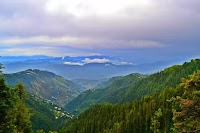
The geo-strategic importance of Gilgit-Baltistan is historic in nature. For thousands of years, the Russian, Chinese, Persian, Tibetan and Indian Empires fought over the passes of this region to dominate each other.That is why this region has a combined taste of all the culture. Different types of festivals shows their presence in this region.
The territory was part of the Delhi Sultanate until it fell to the Mughal Empire in the early half of the 16th century. By 1757,suzerainty of the region was obtained from the Mughals by Ahmad Shah Durrani under an agreement and became part ofAfghanistan (also known as the Durrani Empire) until Ranjit Singh invaded and took control from the Afghans in 1819. It became a princely state with the name "Jammu and Kashmir" around 1847. After the partition of British India in 1947, Jammu and Kashmir initially remained an independent state. After the Indo-Pakistani War of 1947, Pakistani control was established on territories captured by Pakistan to the north and west of the cease-fire line. In 1970, the name "Northern Areas" (today's Gilgit–Baltistan, 72,971 km²) was applied to the areas that had previously been known as the Gilgit Agency and Baltistan. The name "Northern Areas" was actually first used by the United Nations to refer to the northern areas of Kashmir.




